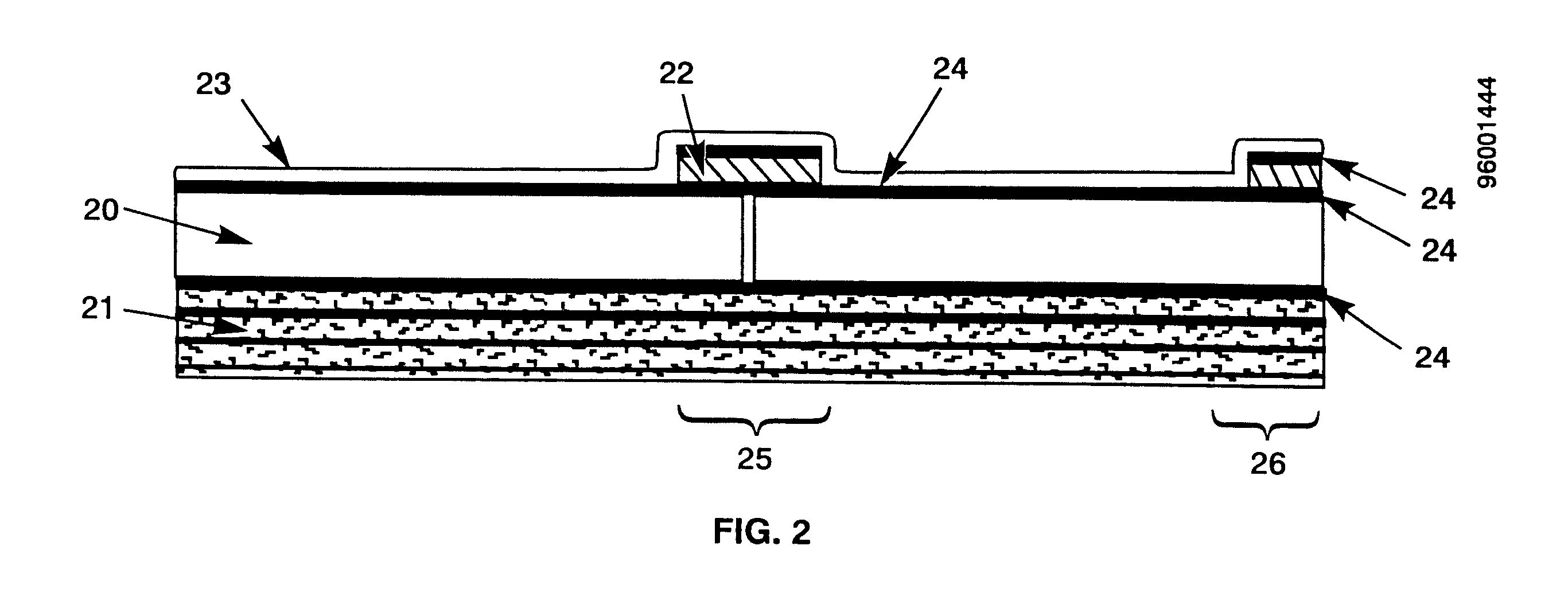Ceramic tile armor with enhanced joint and edge protection
a ceramic tile and joint technology, applied in the field of ceramic tile armor, can solve the problems of large individual tiles not being able to adapt to as great an arrangement of surface configurations, reducing the protection value of ceramic armor, and affecting the appearance of the protective garmen
- Summary
- Abstract
- Description
- Claims
- Application Information
AI Technical Summary
Benefits of technology
Problems solved by technology
Method used
Image
Examples
Embodiment Construction
The construction of the preferred embodiment of the ceramic tile armor is shown in FIGS. 1 and 2. Ceramic tile 20 is bonded to a laminate backing 21, and strips 22 of glass or ceramic are bonded to a joint area 25 and a free-edge area 26 of the ceramic tile 20. A spall shield 23 is bonded over the tile 20 and strips 22. The components are bonded together using a resin adhesive 24.
The ceramic tile 20 is preferably made of aluminum oxide, silicon carbide, or boron carbide depending on the weight, performance, and cost requirements involved. Other suitable tile materials include ceramic matrix composites (CMCs) such as silicon carbide / aluminum, which may provide improved multi-hit resistance due to their higher fracture toughness. The laminate backing 21 is preferably composed of a fiberglass, aramid, or polyethylene fiber-reinforced laminate with a polyester, vinylester, epoxy, phenolic, or other resin matrix component, and is produced in a manner typical of laminate construction. Pre...
PUM
| Property | Measurement | Unit |
|---|---|---|
| angle | aaaaa | aaaaa |
| thickness | aaaaa | aaaaa |
| thickness | aaaaa | aaaaa |
Abstract
Description
Claims
Application Information
 Login to View More
Login to View More - R&D
- Intellectual Property
- Life Sciences
- Materials
- Tech Scout
- Unparalleled Data Quality
- Higher Quality Content
- 60% Fewer Hallucinations
Browse by: Latest US Patents, China's latest patents, Technical Efficacy Thesaurus, Application Domain, Technology Topic, Popular Technical Reports.
© 2025 PatSnap. All rights reserved.Legal|Privacy policy|Modern Slavery Act Transparency Statement|Sitemap|About US| Contact US: help@patsnap.com



